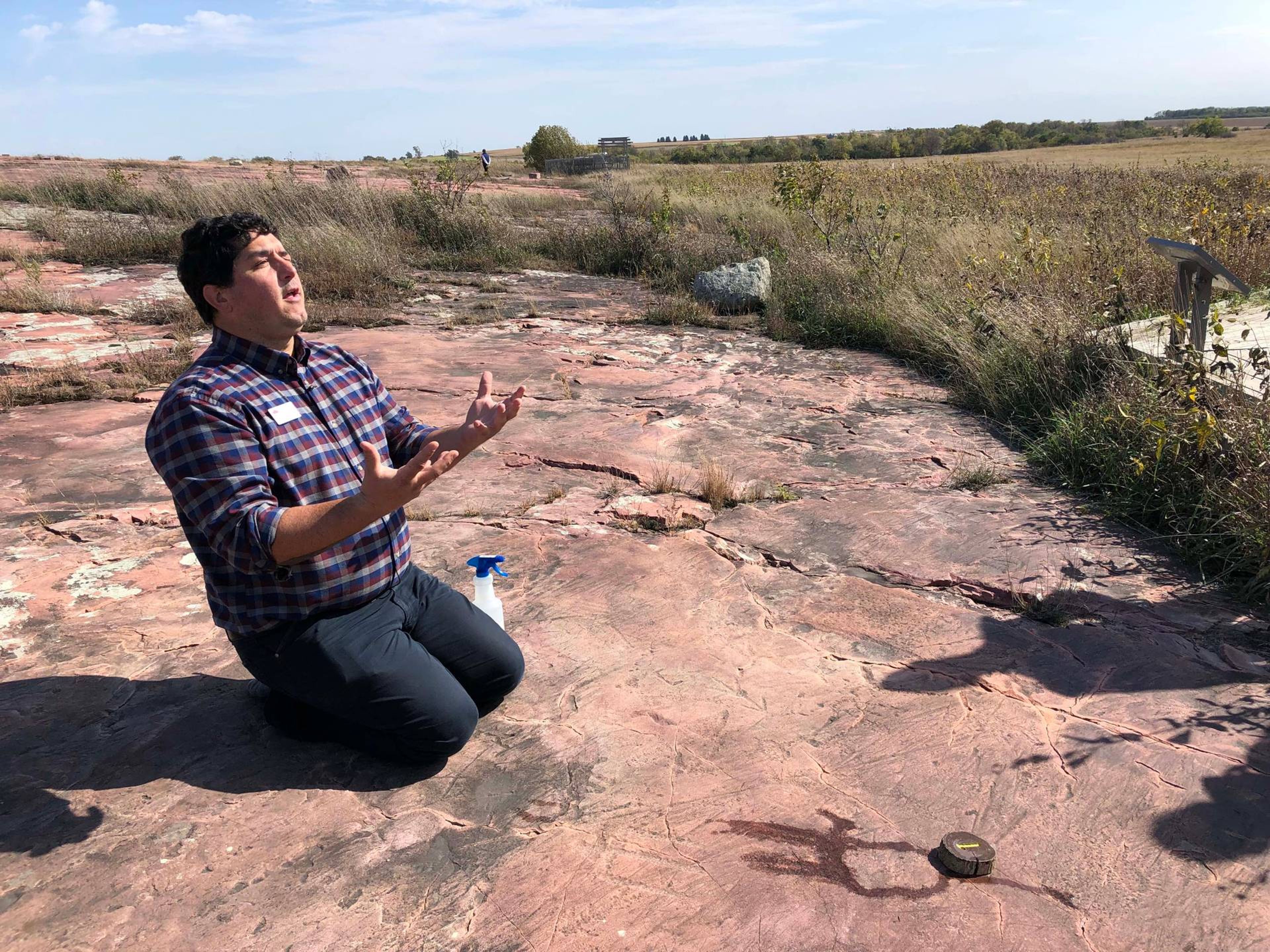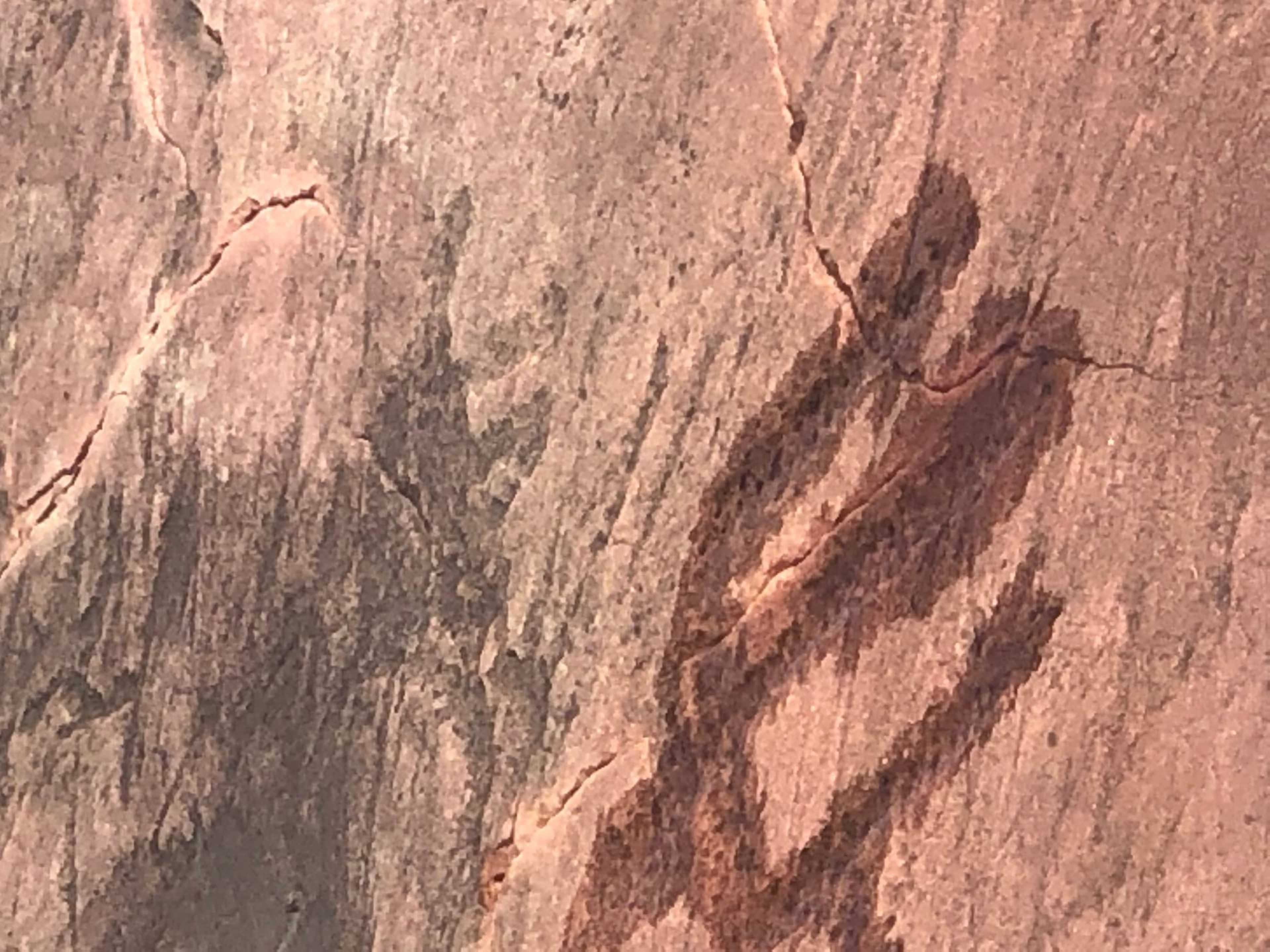Ever visited Petroglyphs Historic Site?
Venture just a few hours from the Twin Cities and you'll discover carvings that date back 10,000 years
The Jeffers Petroglyphs Historic Site sits on native prairie just a few hours' drive from the Twin Cities in southwestern Minnesota, near Comfrey. "We're headed to the Red Rock Ridge. There are 24 sites that have petroglyphs, but none as many as here," explains David Briese, the site manager and our tour guide.
It's about a quarter-mile walk from the building to the thousands of drawings that are jaw-dropping in age. "There are some petroglyphs that you could date to 10,000 years," Briese says, a known fact because, "you compare to other petroglyph sites [where] there's material culture that's datable."

The Minnesota Historical Society has owned the area since 1966 and it's been on the National Register of Historic Places since 1970. But the drawings aren't just the handiwork of one group of people; rather, the petroglyphs were created thousands of years ago by people from all across North America Another. Briese likens the phenomenon to an encyclopedia.
"To really see the petroglyphs, you need mornings or evenings, when the sun is rising or setting, so we use water to bring it out," says Briese. "If you come out in the winter, you can see all the petroglyphs lit up."
We start by viewing a hand - small, ancient hand - with four fingers and a thumb. We don't know if the people were smaller or if the they were depicting a child in the drawings that were carved in stone 7,000 to 10,000 years ago.
Some mysteries remain, however. Other stories are protected because they're sacred to Native American people - and those stories can't be told to others here. The water sprayed on the rock reveals not just symbols, but language, stories, legends, fables. The Minnesota Historical Society worked with Native American elders to create context that was also shared with lawmakers touring the site.

The story of wolf and eagle starts with wolf, whose back is arched up, tail up, mouth open, ears alert, "every act of dominance it can [show]," says Briese. As the tale continues, the animals went to wolf for leadership, and, at this point in the story, eagle is a walking-talking mouth; he just talks and talks. Then eagle goes to wolf to ask a question, and eagle starts to talk while wolf listens. But by the end, eagle says, "Do you understand?" and wolf replies, "Neither do you. You listen, you begin to understand." At this point, eagle begins to take wolf's wise advice, and "this is when eagle's wings grow in, he takes flight, he's able to look down, and that's when his eyes come into form and observe the world - and through this observation, we gain wisdom and knowledge," Briese concludes. "That is how we know eagle as today."
Check out this piece for more ancient stories revealed by the petroglyphs.
This story was published November 4, 2019.
